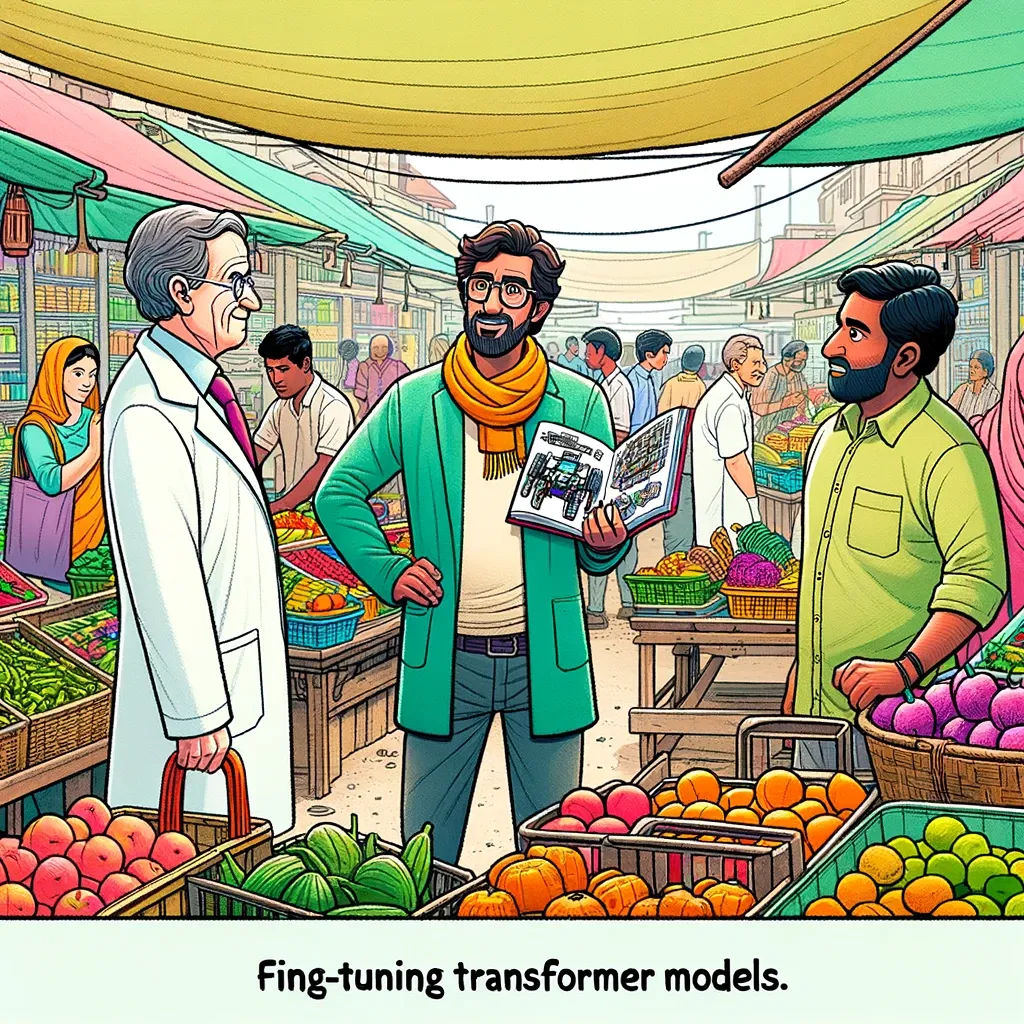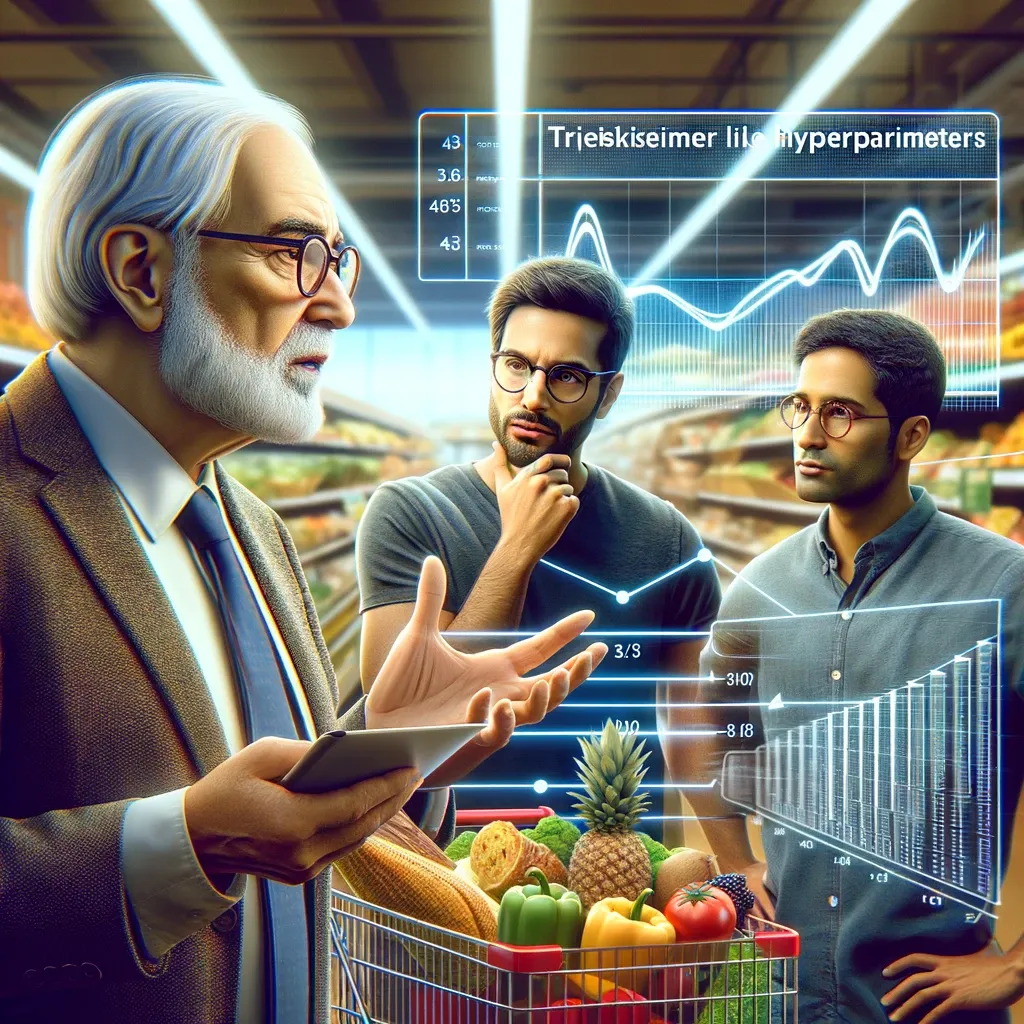Day 14 - Fine tuning

Dr. Silverman was browsing through the fresh produce in the village market when he was approached by Rohit, a student who had attended his lecture on transformers. Mo, who was with Dr. Silverman, looked on with interest.
"Dr. Silverman, it's so great to see you here!" Rohit exclaimed. "I've been working on a transformer model for a school project, but I'm struggling with fine-tuning it."
The Basics of Fine-Tuning
Noticing Mo's curious gaze, Rohit turned to him and explained, "Fine-tuning is like adjusting a recipe to get it just right. We start with a general model – our basic recipe – and then tweak it to suit our specific needs, like adding a bit more spice or salt."
Mo nodded, understanding the analogy. "So, it's about making small adjustments to improve the model?"

"Exactly," Rohit confirmed.
Turning back to Dr. Silverman, Rohit shared his challenges. "My model isn't performing as well as I'd hoped. It's like it's not learning the specifics of my data."
Dr. Silverman thought for a moment. "Fine-tuning can be tricky. It's like fine-tuning a musical instrument; each adjustment can significantly change the output."
Dr. Silverman suggested, "You might want to look at your learning rate. It's like adjusting the heat when cooking. Too high, and you might overcook the dish. Too low, and it might never cook through. A slight adjustment can make a big difference."

Rohit listened intently, taking mental notes.
"Also, consider the interaction between your model and the data," Dr. Silverman continued. "Think of it as a chef getting to know their ingredients. The better the understanding, the better the dish."
The Role of Hyperparameters
"Adjusting hyperparameters can also help," added Dr. Silverman. "It's like tweaking the seasoning in a dish. Sometimes, a small change in the amount or type of seasoning can transform the flavor."
Rohit's eyes brightened with hope. "These are great suggestions, Dr. Silverman. I'll try adjusting the learning rate and hyperparameters. And I'll pay more attention to how my data interacts with the model."
Mo, fascinated by the conversation, smiled. "Looks like you're going to cook up something great, Rohit!"
As they parted ways, Dr. Silverman offered some parting words of encouragement. "Remember, Rohit, fine-tuning is part art, part science. Don't be afraid to experiment."

Rohit left the market feeling more confident, ready to tackle his project with a new perspective. Mo waved goodbye, his mind now buzzing with the complexities and possibilities of AI.
Their conversation in the market had not only been a lesson in fine-tuning AI models but also an inspiring exchange of ideas and encouragement, weaving together the worlds of technology and everyday life.
As Dr. Silverman left the store, he reflected on the power of knowledge sharing and the endless possibilities AI presented. The chance meeting had turned into a productive and enlightening session, igniting a spark of creativity and curiosity.
Enjoyed unraveling the mysteries of AI with Everyday Stories? Share this gem with friends and family who'd love a jargon-free journey into the world of artificial intelligence!
No spam, no sharing to third party. Only you and me.






